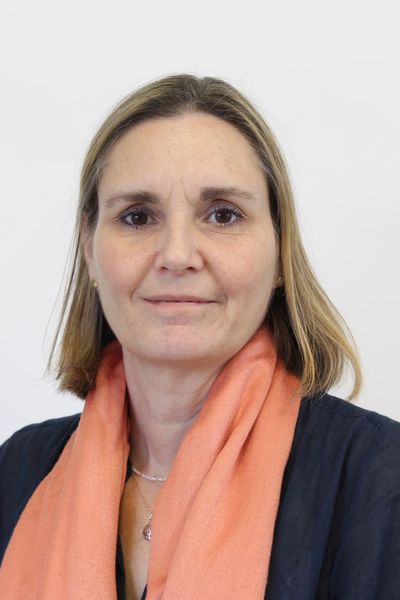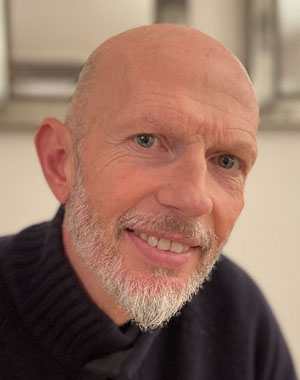Meet the therapist series: Elspeth Scott
Elspeth has been working as an Art therapist for the past nineteen years. She is
registered with the Health and Care Professions Council (HCPC) and is a member of
the British Association of Art Therapists (BAAT). Elspeth offers both online and in-
Person therapy in Kensington/Earl’s Court.
The focus is on the artwork as a means of communicating difficulties, rather than
solely the difficulties themselves and she uses a psychodynamic model. It is important
to know that the work in art therapy is not judged in any way on artistic competence
or merit.

How long have you worked as a therapist and what sort of people have come to you
for therapy?
Much of my work has been in schools with children and young people, particularly
teenagers. I also see adults, as well as young people, in my private practice.
What are the concerns that people bring to work through with you in therapy?
The reasons why people come to art therapy are varied and it can help with a wide
range of issues for people of all ages. In my work with young people, I have often
worked with those experiencing emotional and behavioural difficulties that are
impacting on their mental health and well-being as well as on their learning. There are
those who may be struggling with particular life events such as bereavement, changes
in family structure and sometimes illness. Others have experienced bullying, trauma
or other types of adversity in their lives that are affecting their emotional well-being.
This can include increased feelings of anxiety. I have also worked with people on the
autistic spectrum who can find aspects of everyday life overwhelming and challenging.
How long have you worked as a therapist and what sort of people have come to you
for therapy?
I have been working as an art therapist since I completed my training in 2004. Much
of my work has been in schools with children and young people, particularly
teenagers. I also see adults, as well as young people, in my private practice.
How did you become a therapist?
I have always been interested in people’s wellbeing and whilst teaching art and design
in a large secondary school in North London, I was drawn to the pastoral side of
working in the institution. I became interested in helping young people but not
necessarily through teaching and embarked on a career counselling programme
through the CCS (Career Counselling Service). This provided me with helpful insight
into things that I enjoyed, valued and was good at.
At the same time, I discovered that there was such a thing as art therapy and the idea
of becoming an art therapist gave me an immediate feeling of something falling into
place.
I had also begun seeing a Jungian psychoanalyst and will always remember the
moment that I informed my therapist, about half way through a session, that I was
going to apply for the art therapy training. Again, there was a sense that I was
moving along the right path.
What was your training and what was it like?
I did a three year part-time MA in Art Psychotherapy at Hatfield, University of
Hertfordshire. Training to become a therapist was hard work but very fulfilling and life
changing on a personal level. There were many aspects to the course, including
developing understanding through experiential learning, which was different to other
types of learning that I had done previously. Being on the three year course meant
that I did three training placements, the first one being with adults with
neurodisabilities and the second two were with children and adolescents. I was
fortunate that my final placement employed me as an art therapist after I had
qualified.
Can you tell us about the type of therapy you practise?
I work as an art therapist, which is a form of psychotherapy that involves the use of art materials. It is important to know that the work does not require any kind of skill and the images are not judget on artistic merit, but are seen as possessing potential meanings, such as thoughts, feelings, dreams and memories.
The artmaking can be used as a way of communicating things non-verbally that might
be too difficult to put into words. The client can find their own meanings within the
images and image making process. Of course, it is fine to talk too, and the client is
free to make use of the time in the sessions as they wish.
Art therapy began in the 1940s and the term was coined by an artist called Adrian Hill
who noted the beneficial effects of painting whilst recovering from tuberculosis.
How does art therapy help?
Art therapy can be helpful for people with a wide spectrum of needs and difficulties.
The act of doing something creative that doesn’t involve a need to be skilful or to
make something aesthetically pleasing – be it through painting, drawing or
experiencing the sensory input of materials such as clay or sand – can be very
soothing.
It can also evoke other feeling states that are able to be explored within the safety of
the sessions. It is a way of helping a person communicate their inner state, as well as
release their feelings, and work through a process of self-healing over which they
themselves have some control.
Have you noticed any recent mental health trends or wider changes in attitude?
Whilst social media has played a positive role in helping people to understand more
about mental health, there have been some negative trends connected to social media
that I have seen in my work. This has particularly been the case with teenagers
around bullying.
I have done quite a lot of work with young people on the autistic spectrum and there
appears to be a growing understanding and awareness of autism, particularly in girls
with whom autistic traits can be harder to identify than with boys.
What do you like about being a therapist?
I love helping people along their healing path. Work in the therapy can bring up
difficult feelings, but it can also be very playful and this is often a beneficial aspect of
our lives that becomes lost.
The sessions offer a safe space where a client can bring their vulnerable self, together
with emotions and feelings, such as fear or sadness, that are often not so well
accepted and supported outside in society.
What you do for your own well being?
I have an allotment where I grow my own fruit, vegetables and flowers. Experiencing
a connection with the earth and nature is an essential part of my life that nourishes
me both mentally and physically. I also keep up my practice as an artist and I enjoy cooking and cycling too.
What’s your consultation room like?
The room where I work has been specially designed for use by therapists and their
clients. It is private, comfortable, light, nicely decorated and is easily accessible via
public transport.
What did you learn about yourself in therapy?
There are many layers to what I have learned about myself in therapy, some of which
I have come to understand more fully later on. As a creative person, I like to visualise
a sort of pattern with many interconnecting parts that represent our own unique set of
experiences, relationships and circumstances that form the changing pattern of our
lives.
What do you wish people knew about therapy?
I wish people knew how having a consistent time for oneself each week seeing a
therapist can bring about such worthwhile changes in one’s life. Often it can be vital
and I would encourage anyone to take those steps.


